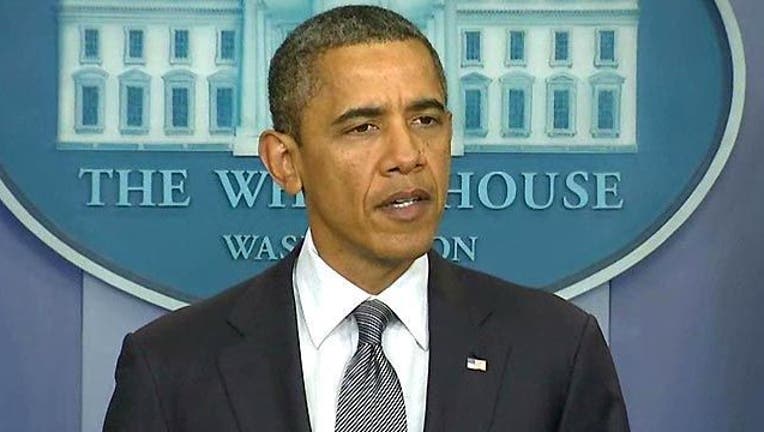Homicide spike draws alarm from Obama administration

WASHINGTON (AP) — This year has brought an unusually grim and steady drumbeat of violence throughout the country.
A 5-month-old girl killed this month in Cleveland in a drive-by shooting. Seven people slain in Chicago over the July 4th weekend. A young female journalist in Washington, D.C., fatally struck by a bullet in May while waiting to change buses.
Violent crime has often been considered a local government concern and a problem that had been on the decline. But rising homicide totals in most of America's large cities have raised alarms within the Obama administration, with federal officials drawing urgent attention to the problem before Congress, at conferences and in speeches.
The Justice Department this month organized a brainstorming summit with mayors and police chiefs. FBI Director James Comey, testifying before Congress last week, said the "very disturbing" homicide spike has law enforcement scrambling to figure out why it's happening now, and why in so many cities that seemingly have little in common otherwise.
"It's happening all over the country, and it's happening all in the last 10 months," Comey told the House Judiciary Committee. "And so a lot of us in law enforcement are talking and trying to understand what is happening in this country. What explains the map? What explains the calendar? "
President Barack Obama addressed a meeting of International Association of Chiefs of Police in Chicago on Tuesday, where he defended police officers for doing their jobs with "distinction" and said they had been scapegoated for the failures of society and the criminal justice system. Attorney General Loretta Lynch had also been expected to speak, but her appearance was canceled because she was not feeling well.
Though the homicide totals are rising, they're nowhere close to levels of the early 1990s, when the crack cocaine epidemic contributed to hundreds of homicides a year in some cities.
Even so, federal officials are concerned that the current trend comes as a series of high-profile police shootings of young black men have driven a wedge between police and their communities and placed policing tactics under extraordinary scrutiny. Each instance of perceived officer misconduct, and each time an officer is physically attacked while on patrol, risks widening that divide, Comey has said.
The uptick, if it continues, threatens to draw resources away from other police department initiatives — and reverse some of the progress cities have made against violent crime over the last two decades.
Washington, D.C., which in 2012 recorded just 88 homicides, already has 128 this year. Chicago police counted 385 killings as of Oct. 18, up from 323 on the same date last year. Police in Cleveland say they had 101 slayings as of Friday, an increase from the 87 they reported on the same date in 2014.
There's no single explanation, and it's not clear whether this year's numbers are an aberration or the start of a worrisome trend. Some blame easier access to drugs and guns and have suggested that residents, including gangs, suddenly seem more willing to resolve petty disputes with deadly violence.
In New Orleans, where homicides are also on the rise, "community leaders emphasize to us that the majority of young men involved in these violent crimes are having a sort of crisis in their identities and their sense of being part of this community and being valued and valuing others," said Ursula Price of the office of the New Orleans Independent Police Monitor.
Some experts also think that the homicide totals had crept so low that it was unreasonable to expect that decline to continue, or theorize that police strategies may have stopped evolving amid success.
"We thought that all the things we were doing were making crime decline in meaningful, permanent ways," said John Roman, a senior fellow at the Urban Institute, a Washington think tank. "And it turned out we weren't doing as much as we thought, and the declines weren't permanent."
Comey last week raised another, more controversial possibility: that ever-present cellphone videos, and the possibility that such recordings could go viral, have made some officers anxious about getting out of their cars and wading into face-to-face encounters.
He said that theory emerged from conversations with police officials, though there's no hard enough to back it up and several chiefs swiftly rejected the notion. The White House distanced itself from the statements, with spokesman Josh Earnest saying the available evidence doesn't support the idea that police "around the country are shying away from fulfilling their responsibilities."
Meanwhile, it remains to be seen exactly what the federal government can do about the problem.
The Justice Department, which already funds programs for local police departments, offers tactical training and investigates troubled police forces for unconstitutional policing practices, this month convened an unusual summit for elected officials, police and prosecutors to swap ideas and experiences. On Tuesday, the department released a report aimed at preventing police officers from being victims of violent ambushes and a separate guidebook laying out what it says are best practices for policing.
But it's not clear how much its influence can directly affect street crime.
"There's very little (the federal government) can do," Roman said, "other than acknowledge that America seems to be at the moment where violence is increasing and to shine a spotlight on that."
____
Associated Press writer Don Babwin in Chicago contributed to this report.
Follow Eric Tucker on Twitter at http://www.twitter.com/etuckerAP

